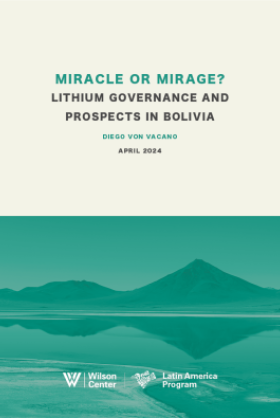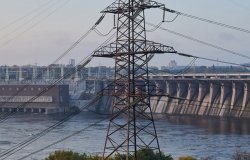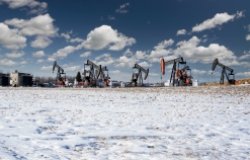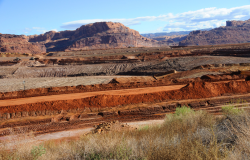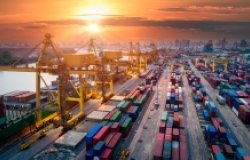Cautious Optimism: China’s Nuclear Energy Safety Measures Improving
Motivated in part by mounting public pressure to cut down on the smog created by more than 600 coal-fired power plants, China’s nuclear energy capacity is growing faster than any other country in the world.
Motivated in part by mounting public pressure to cut down on the smog created by more than 600 coal-fired power plants, China’s nuclear energy capacity is growing faster than any other country in the world.
China’s nuclear energy capacity is growing faster than any other country in the world
There are currently 20 nuclear power reactors in operation in China and nuclear energy comprises about two percent of China’s total electricity mix. But aggressive targets in China’s 12th Five-Year-Plan have mobilized more than 16 provinces, regions, and municipalities to announce intentions to build new plants. There are 28 plants under construction, and the government has plans for a more than threefold increase in generation capacity by 2020.
But this boom is not without skepticism. In June 2014, the head of France’s Nuclear Safety Authority criticized China’s oversight mechanisms due to lack of transparency and channels for deeper international collaboration.
Given China’s sometimes questionable construction standards, such fears might seem justified, but a closer look reveals the government has made significant efforts to increase international collaboration on nuclear safety and transparency following the Fukushima meltdown in 2011.
Expanding International Collaboration
During its national post-Fukushima nuclear moratorium, China not only performed safety inspections at all the plants under the purview of its domestic National Nuclear Safety Authority (NNSA), but hosted a multitude of operational safety review teams from the International Atomic Energy Association (IAEA) at all of its plants. Moreover, the State Council took a significant step by requiring Chinese regulations to fully incorporate IAEA safety standards for the first time.
The State Council took a significant step by requiring Chinese regulations to fully incorporate IAEA safety standards for the first time
China’s seriousness towards increasing nuclear safety is also reflected in its willingness to cooperate with Japan amidst an otherwise very frosty relationship. In December 2013, the NNSA agreed to develop aframework for information exchange with the Nuclear Regulatory Authority of Japan in case another nuclear accident occurs.
China-U.S. cooperation on nuclear safety dates back to 1981, when the U.S. Nuclear Regulatory Commission and China’s State Science and Technology Commission signed a protocol on nuclear safety cooperation. China and the United States expanded activities under the Peaceful Uses in Nuclear Technology agreement shortly after the Fukushima incident by establishing working groups that collaborate on safeguards, security, and emergency management.
There is also more technical information exchange than in the past through the OECD’s Nuclear Energy Agency Multinational Design Evaluation Program. Multiple countries participate, including the United States, China, Korea, Japan, Russia, France, and Canada. The next general meeting will be hosted by China in September and focus on proper management, safety review, and design for the next generation of advanced nuclear reactors.
Piloting the Next Generation of Reactors
China’s nuclear energy sector is breaking away from being a purely domestic industry, as evidenced by recent investments for advanced nuclear reactors in Britain that have to meet “strict standards for safety and security,” according to the British government. Conversely, on the domestic side, the U.S. company Westinghouse has a large presence in China and is looking to spearhead the construction of Generation III reactor technology there.
Generation III reactors incorporate evolutionary improvements, from enhanced fuel technology, advanced cooling mechanisms, and passive safety systems to simplified designs for reduced maintenance, compared to the fleet of reactors developed prior to the year 2000 (known as Generation II). China’s State Council Research Office reports the probability of a serious accident with Generation III reactors is about 100 times less than that for a Generation II plant.
China’s willingness to assume the role of Westinghouse’s pilot country for these new reactors has opened up a new phase in bilateral safety engagement. China’s Sanmen nuclear site is on track to be the first in the world with Generation III capabilities by the end of 2015 with its AP-1000 reactor. AP-1000 reactors are advertised as having unparalleled safety due to their simplified design, earthquake and flood resistance, and the ability to continue running and maintain cooling during an extended electrical blackout.
How successful China is in monitoring and handling this new generation of reactors will be a major test, but so far the government has done all the rights things.
Staff Shortages and Disaster Risk Reduction
Despite the hopeful outlook, there are some concerns.
17 out of the 25 nuclear plants under construction are in tsunami-risk areas
An ongoing challenge is lack of human capacity. Despite improvements to hardware – more simplified and advanced reactors – there may be a shortage of “software.” It takes four to eight years for a college graduate to become properly fluent with safety management and technical skills in China, according to the State Council Research Office. To keep up with the number of new plants – and maintain proper oversight of them – training of new staff needs to be continuous, efficient, and comprehensive.
Perhaps the most threatening challenge, however, is largely out of human hands: natural disasters. Today, every nuclear plant in operation or under construction is located in a coastal province, except Hebei. This makes some sense, given the water-intensive nature of nuclear power generation, but a study conducted by Natural Hazards in 2012 found 17 out of the 25 nuclear plants under construction at the time were in tsunami-risk areas.
Given that both the United States and France have located many of their nuclear plants in inland areas, it would be wise for China to do so as well. This may be challenging, given seismic activity and lack of water in China’s inland areas, but government support and investment in air cooled plants, water recycling initiatives, and careful site-planning, could play an integral role in overcoming such constraints.
Moving in the Right Direction
“Nuclear safety in China is work in progress,” said Bo Kong, an energy expert and professor at the University of Oklahoma, in an interview. “The country’s challenges will only grow as the number of reactors grows, its existing fleet gets older, and expansion moves inland.”
Yet, there are reasons for qualified optimism as China has made considerable strides towards increasing its nuclear safety landscape since Fukushima.
International cooperation and industry transparency – arguably the most important first steps to improving nuclear safety – have improved. With help from Westinghouse, China is also leading the charge in developing the most fool-proof nuclear reactors to date.
Sources: Bloomberg, ChinaDialogue, LWGCW, The New York Times, OECD Nuclear Energy Agency, ScienceDaily, U.S. Department of Energy, The Wall Street Journal, World Coal Association, World Nuclear Association.
Photo Credit: A fast-breeder reactor under construction in 2004, courtesy of Peter Pavlicek/IAEA.
This article was first posted on the China Environment Forum’s column on New Security Beat, the blog of the Environmental Change and Security Program.
Contributor

China Environment Forum
Since 1997, the China Environment Forum's mission has been to forge US-China cooperation on energy, environment, and sustainable development challenges. We play a unique nonpartisan role in creating multi-stakeholder dialogues around these issues. Read more


